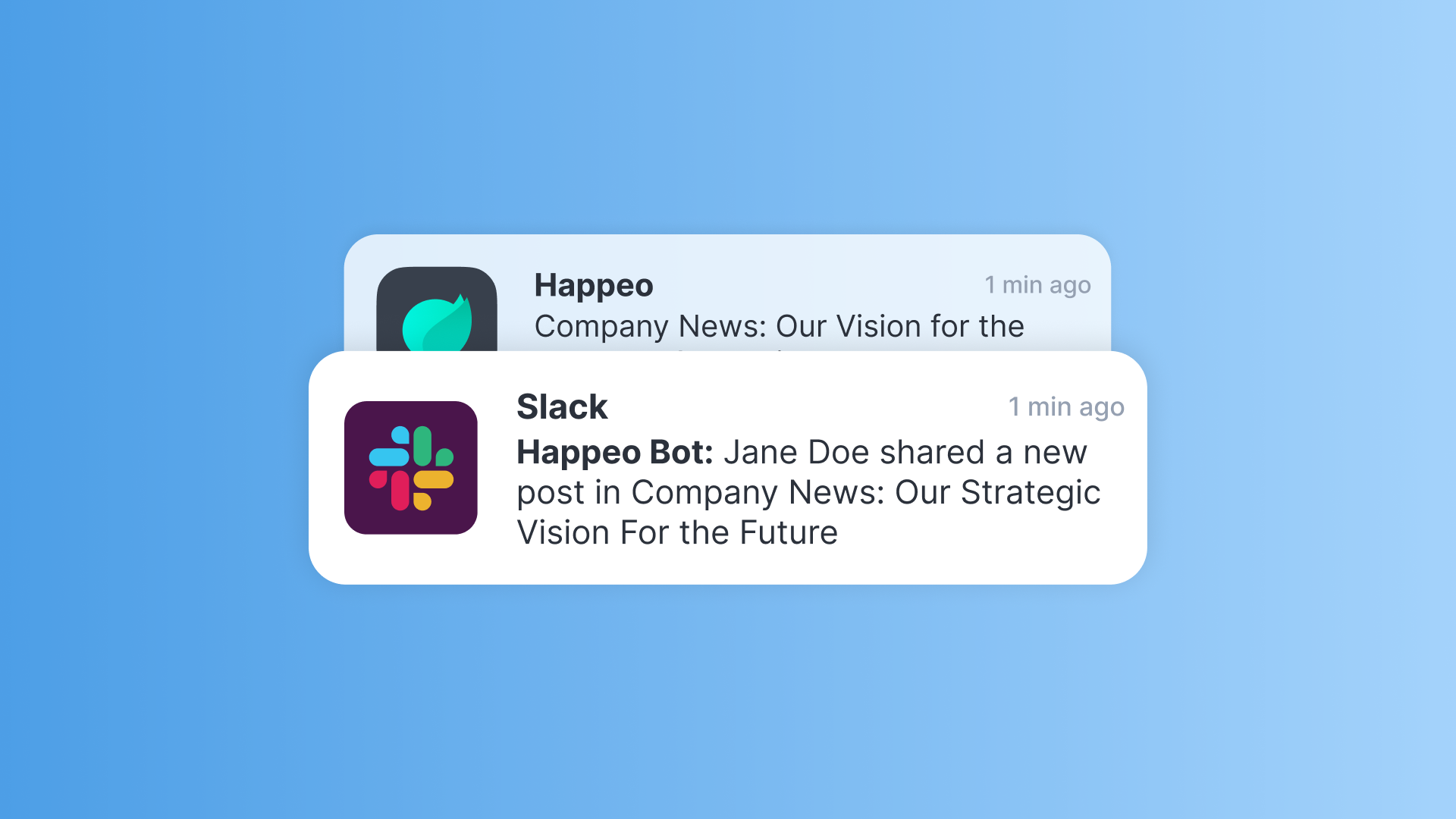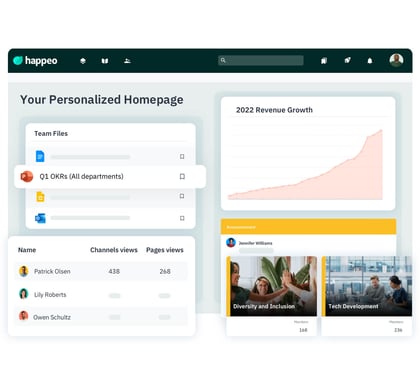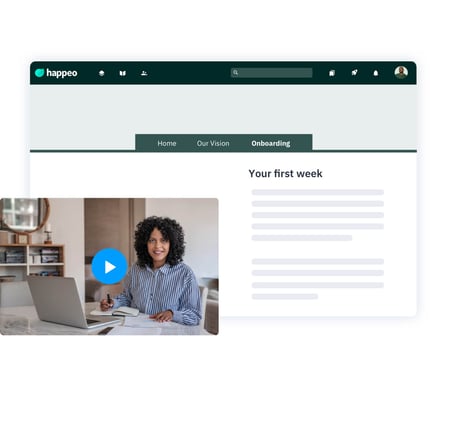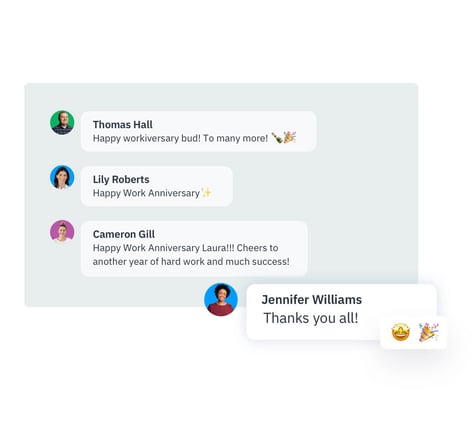
Comparisons Knowledge Management
8 reasons why SharePoint intranet may NOT be the best fit

9 mins read
Start building your digital home with Happeo
Request a demoComparisons Knowledge Management
Product
Features
Solutions
Happeo for
Use cases
Resources
Explore
Support
Happeo For
Use cases
Comparisons
Explore
Support
Recent

Jonathan Davies
9 mins read
SharePoint is an excellent platform for organizations that need to store and organize large amounts of information.
It integrates with Microsoft 365, allows for version control, and it includes permission management. Many teams also use SharePoint as an intranet portal. But is SharePoint an intranet? We’ll answer that question in this post and give you the information you need to decide whether using SharePoint as an intranet is right for your business.
Get a Microsoft intranet
Microsoft SharePoint intranet is an internal network for managing communication and files. It includes some project management features, self-service training, and performance-tracking tools.
Some users — especially those working remotely — find SharePoint online intranet to be more versatile than the local instance of SharePoint. The online version comes with automatic updates and security patches, whereas the local version requires manual maintenance and updates.
SharePoint is available with standard features and custom options. Ranging from least to most expensive, the four main categories of SharePoint intranet options are:
Out-of-the-box intranet
This is the most basic version of SharePoint, with limited support. Businesses opting for this version will need their own IT team to implement and deploy SharePoint.
Intranet in-a-box
While this is not the top-tier version of SharePoint, it is the fastest version to deploy — it contains some useful features, but no customizations that are a drag on deployment. With this version, customers get ongoing support and access to experts.
In-house intranet
This customized, feature-rich version includes in-house support, but it also requires IT skills to implement.
Custom intranet
This enterprise-level version is for companies that can manage SharePoint internally, without support.
Many companies may use SharePoint as an intranet simply because that’s what they’ve always used. Companies that initially used SharePoint solely for document management may have embraced SharePoint’s intranet collaboration features as they were rolled out, without realizing the range of other intranet platforms that are on the market today.
SharePoint does include several features that support its use as an intranet tool, such as:
Content publishing
With multiple templates, themes, and design elements, you don’t need a design or IT background to create engaging intranet pages. You can even configure pages to pull content from different sources and apply your own company branding to each page.
Document management and sharing
SharePoint lets users control access to documents, invite others to collaborate, and control how other members can share content. Metadata and tagging help users quickly locate documents, and with the ability to restore previous versions of files (even from the recycling bin), there’s never the risk of losing important work.
Version control
SharePoint’s version control features are especially useful for HR professionals that update and manage corporate documents and policies. Legacy files can be preserved, with restricted access to ensure no one incorrectly uses previous versions.
Internal Communications
Like any intranet, SharePoint improves Internal Communication. Users can communicate in real time from wherever they are, without the use of email or messaging apps like Slack and Skype.
Native Microsoft integration
With the add-on integration pack for SharePoint, IT teams can connect the platform to the Microsoft suite. That means users can edit Word documents from within SharePoint, as well as access Microsoft Teams.
Enterprise-level security
SharePoint includes multiple layers of security, such as two-factor authentication, and all assets are stored on Microsoft’s secure cloud servers. (As mentioned earlier in this post, SharePoint Online security patches are automatic but must be installed manually on local versions).
Microsoft SharePoint is one of the most popular intranet platforms, and many companies may find it suits their needs well. However, it might not be the top choice for some organizations, for the following reasons:
Sharepoint is not user-centric
One of SharePoint’s key selling points is its technology — it’s capable of performing a wide variety of tasks, but it’s not the most user-friendly environment. Companies that don’t have IT teams or can’t devote much time to training may find SharePoint is too complex for their needs.
SharePoint can be costly
The cost of SharePoint can be as much as $23/user/month, which is costly for both small teams with limited budgets, and enterprises with hundreds or thousands of employees. Collateral costs — such as hardware upgrades to accommodate the platform, or hiring staff to manage it — can put SharePoint out of reach for many budget-conscious companies.
SharePoint is difficult to implement, customize, and maintain
If you intend to use SharePoint as an intranet, it will require some degree of customization, and many companies don’t have the skillset to implement a custom program or the budget to pay SharePoint to implement it. This software also requires ongoing maintenance, which can be a burden for small IT teams.
SharePoint is not optimized for the cloud
SharePoint originated as a server application, and while it has evolved over the years, its cloud functionality is problematic at times. Some businesses may prefer a newer intranet platform built specifically for the cloud.
SharePoint is a static communication platform
SharePoint is effective for top-down communication like company announcements, but it’s not built for fostering company-wide communication between employees and management, or between teams.
SharePoint cannot be easily personalized
Whereas some intranet platforms let users personalize their homepage with the content that’s most relevant to them, SharePoint doesn’t offer this feature. That could mean users will be less inclined to engage with the platform.
SharePoint is missing important collaboration features
With no integrated video call or chat functionality, SharePoint isn’t ideal for collaboration. It also is missing key social features that you’ll find in other modern intranet platforms.
SharePoint can only be used with Microsoft 365
Perhaps the biggest drawback with SharePoint is that it has no Google Workspace integration — it works only with the Microsoft 365 environment. That means companies that use Google Workspace would need to purchase Microsoft 365 in order to use SharePoint.
Why is Happeo the best intranet alternative to SharePoint?
Happeo is a social intranet platform with the features agile and remote teams need to improve communication and collaboration. It integrates with Google Workspace and Microsoft 365, for maximum flexibility.
Some of the advantages Happeo offers over SharePoint include:
Fast deployment
On average, deployment of other intranet platforms takes 1.2 years. Happeo’s user-first interface allows for much faster deployment, with 54% of customers launching within the first 90 days, and 87% launching within six months.
Simple to personalize
Happeo lets you create a custom company homepage with dynamic content, and employees can configure their own page view to include only the content that’s most relevant to them.

Happeo's "My Stream" and "My News" features
Advanced search options
Happeo’s two search options — Universal Search and the optional Federated Search — give users the ability to find what they’re looking for with lightning speed. Universal Search returns results for pages, channels, files, posts, emails, and calendar entries. Federated Search also searches any integrated apps, such as Slack, Jira, and (coming soon) Salesforce.
Dynamic communication
Happeo’s communication features let users exchange ideas via chat, respond to and share others’ posts, and engage in communication with leadership. And with detailed analytics, administrators can see what type of content employees find most useful and engaging.
Effective onboarding
Happeo lets administrators create a feature-rich onboarding experience, complete with an Employee directory, training milestones, and easy access to all onboarding materials.

An example of an employee onboarding portal in Happeo
Social collaboration
The social collaboration features in Happeo help employees connect with each other from wherever they are. Users can share external articles, post photos or videos, and show their appreciation for a colleague’s outstanding work.

An example of how Happeo fosters social engagement
Seamless integration
In addition to integrating with Microsoft 365 and Google Workspace, Happeo easily integrates with the tools and apps teams use every day. That means users don’t have to switch between multiple platforms every day — they can access all integrated apps from within Happeo, which increases productivity.
While SharePoint has definitely become more user-friendly over the years, it still doesn’t measure-up to modern intranet platforms that are quick to launch, easy to use, and drive employee engagement.
Happeo is a dynamic intranet platform that empowers employees to exchange ideas and seek knowledge. It simplifies onboarding, fosters collaboration, and serves as a virtual “watercooler.” Are you ready to see what Happeo can do for your business? Request a demo today!
